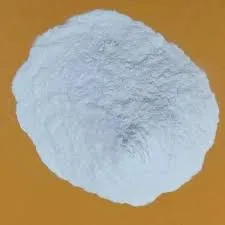
Dec . 04, 2024 04:29 Back to list
HPMC Applications and Benefits for Improving Putty Powder Performance
HPMC for Putty Powder Enhancing Performance and Application
Hydroxypropyl Methylcellulose (HPMC) is a versatile cellulose ether widely used in various industries, especially in construction. Its application in putty powder has garnered significant attention due to its exceptional properties that enhance both performance and usability. This article explores the role of HPMC in putty powder, highlighting its benefits, applications, and contribution to the overall quality of construction materials.
What is Putty Powder?
Putty powder is a mixture used for filling and repairing surfaces, typically made from cement or gypsum, along with additives and fillers. It is commonly applied to walls before painting or wallpapering, providing a smooth and even surface. The quality of putty powder is critical, as it affects adhesion, workability, and durability.
Role of HPMC in Putty Powder
HPMC acts as a crucial additive in putty powder formulations. Its inclusion brings several advantages, making it an essential component in achieving optimal performance
1. Improved Workability HPMC enhances the rheological properties of putty powder. This improvement means that the putty is easier to mix, apply, and spread on surfaces. As a result, construction workers can achieve a smoother finish with less effort, thus saving time and reducing labor costs.
2. Enhanced Adhesion One of the primary functions of putty powder is to adhere to surfaces effectively. HPMC enhances the adhesion properties of the putty, ensuring that it sticks well to walls and ceilings. This improvement minimizes the risk of peeling and flaking, which can occur if the putty fails to bond properly.
hpmc for putty powder

3. Water Retention HPMC is known for its excellent water-retention capabilities. When added to putty powder, it helps retain moisture during the curing process, preventing the mixture from drying out too quickly. This aspect is especially important in regions with hot and dry climates, where rapid evaporation can lead to cracks and surface defects.
4. Thickening Agent HPMC also acts as a thickening agent, allowing for the desired consistency in putty formulations. This control over viscosity ensures that the putty does not run or sag during application, providing a stable product that can be easily handled.
5. Reduced Shrinkage The use of HPMC in putty powder formulations can reduce shrinkage during the drying process. This characteristic is vital for maintaining the integrity of the applied layer and reducing the formation of cracks that can compromise the aesthetic and functional quality of the surface.
Environmental Considerations
In addition to the technical benefits, HPMC is considered to be an eco-friendly additive. It is non-toxic and does not release harmful volatile organic compounds (VOCs) into the environment, making it a safer choice for both workers and end-users. This aspect aligns with the growing demand for sustainable construction practices and materials in the industry.
Conclusion
The incorporation of HPMC in putty powder formulations significantly enhances the performance and usability of construction materials. With its ability to improve workability, adhesion, water retention, and reduce shrinkage, HPMC serves as an invaluable additive in delivering high-quality putty products. As the construction industry continues to evolve, the demand for effective and eco-friendly additives like HPMC will likely increase, further solidifying its place in modern building materials. By understanding and leveraging the benefits of HPMC, manufacturers can produce putty powder that meets the ever-growing expectations of quality and performance in construction applications.
-
Versatile Hpmc Uses in Different Industries
NewsJun.19,2025
-
Redispersible Powder's Role in Enhancing Durability of Construction Products
NewsJun.19,2025
-
Hydroxyethyl Cellulose Applications Driving Green Industrial Processes
NewsJun.19,2025
-
Exploring Different Redispersible Polymer Powder
NewsJun.19,2025
-
Choosing the Right Mortar Bonding Agent
NewsJun.19,2025
-
Applications and Significance of China Hpmc in Modern Industries
NewsJun.19,2025







